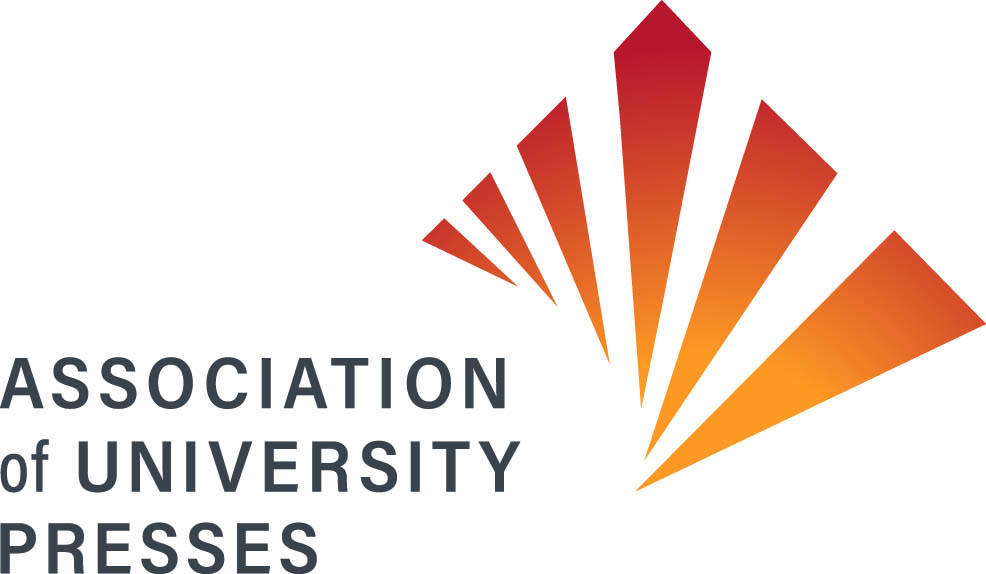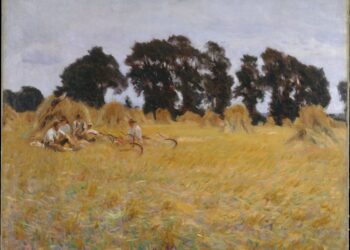Editor’s Note: Today’s post is by Annette Windhorn and Peter Berkery. Annette is the External Communications Manager for the Association of University Presses. Peter has served as the Executive Director of the Association of University Presses since early 2013.
University presses play an essential role in the curation and dissemination of research, especially for monographs and especially in humanities and social sciences (HSS) disciplines. Founded in 1937, the Association of University Presses (AUPresses) supports and extends the work of university presses through collaborative problem-solving, professional development, and advocacy.
Ten years ago, the Association — then known as the Association of American University Presses — had just celebrated its 75th birthday and the first annual University Press Week. Its membership stood at 131 presses, with just 14 outside of North America. Today AUPresses is 161 members strong, including seven newly established presses in North America alone and 22 publishers located outside North America, including in Denmark, Guam, New Zealand, Qatar, and South Africa.
On the occasion of his 10th anniversary at the Association’s helm, Peter M. Berkery Jr. offers observations of how AUPresses has grown and changed, working together to address shared challenges (even a pandemic) and to articulate and advance shared goals. Berkery stepped into the executive director role having previously held positions in Oxford University Press’s US Law Division and at Wolters Kluwer, in addition to having extensive experience in government affairs and association management.

What were your initial impressions of the Association in 2013?
The ground beneath “UP’dom” was shifting in fundamental ways even before I arrived: monograph sales were dropping below break-even; open access (OA) appeared to be migrating from STEM to HSS, from journals to monographs; presses were being realigned under libraries. It was clear that the strategies, policies, and programs that had served our community well up to that point were not going to serve us well in the future. We needed to strengthen ties to other campus constituencies and their representative organizations to able to face these challenges together.
To better understand this inflection point, I made a priority of visiting close to 30 member presses that first year – to experience their passion for the work, to observe the institutional dynamics with other campus actors (librarians, provosts, deans), to recognize their shared and unique pressure points. This “listening tour,” facilitated by my predecessor Peter Givler and with funding from the Andrew W. Mellon Foundation, shaped my understanding of this varied community and informed a commitment to community- and consensus-building. (The tally of visits now stands are more than 100 – it’s been transformative.)
Leading any association comes with challenges. Given the wide variety of sizes, governance structures, and geographical locations of AUPresses members, how do you ensure that people feel seen and heard?
Anthony Cond (director of Liverpool University Press) once remarked that I “preach to a broad church,” given our community’s diversity — of publishing programs, business models, institutional mandates, sizes, geographies — and I think that awareness has guided me in seeking consensus. Organizational decisions can’t always please everyone, but I hope everyone at least feels heard – because they are.
These few examples illustrate the Association’s consensus-building ethos:
- Creating a new strategic plan (2015): Through an iterative process, the Board crafted the bones of a new plan: Mission, Values, Goals, and Strategies to support the goals. We then crowdsourced development of the Tactics to implement those strategies during our Annual Meeting in New Orleans, thanks to our incoming president Barbara Kline Pope, then director of National Academies Press. At an expanded luncheon session, all 700 attendees, grouped cross-functionally to maximize diversity of perspective, evaluated and voted on potential tactics. This effort to amplify a sense of inclusivity through the strategic plan continues to guide our work today.
- Changing our name to the Association of University Presses (2017): We engaged a consultant to conduct qualitative and quantitative brand research with internal and external stakeholders; the Board considered and deliberated carefully before endorsing the consultants’ recommendations, which notably included the name change; and, we communicated extensively with members about the recommendations and their rationale. Member press directors debated for two hours, the vote was 90 for and 10 against, and yet we all still refer to it as a controversial decision! For me, it’s a very telling, even endearing, illustration of who we are as a community and the value we place on collegiality. Also, while I do believe it was an objectively modest change, we know from our many new non-North American members that it was pivotal for them.
- Increasing volunteer participation: Our committees and task forces have expanded materially in the past decade — from 86 press staff members in 2013 to more than 220 currently. From longstanding activities like our Annual Meeting and our Book, Jacket, and Journal Show to newer endeavors like our Ask UP website, some of the Association’s most visible projects are the work of scores of energetic committee volunteers.
Another key to success here is the community’s wholehearted and universal support for our core values – integrity, stewardship, intellectual freedom, and diversity & inclusion. Enacting these values requires diligence and creativity. For example, we are resolved to assess and approach our activities, programs, and services through an equity, justice, inclusion, and belonging (EJIB) lens, which sometimes can prove difficult across myriad institutions with varying governance. And another particular dimension of inclusion we continue to struggle with is geography. As our global membership has grown our ability to accommodate time zones has diminished. We can’t change the laws of physics, but we do need to develop better strategies to enliven our broadened reach.
It can be fraught when an association creates a strong sense of values-based identity; when values become orthodoxy, conflict within a membership sometimes can result. And even AUPresses has a small number of members who sense an “insider/outsider” dichotomy at work in our Association, which saddens me, honestly. No person or viewpoint is unwelcome here; the breadth of our church is part of its strength. But I do fundamentally believe that our core values unite us in a profound way.
How has the Association navigated the open access landscape given the wide-ranging views of its members?
When I came to the Association in 2013, it was clear to me that OA had achieved critical mass. To those who at the time believed we needed to work in opposition to OA, my (perhaps too glib) response was: the train is leaving the station; our choices are to be on it or under it. Claiming our seat at the table presented our best opportunity to ensure that the differences between books and journals – and STEM and HSS – were acknowledged and that the labor of publishing was valued. So that’s what we did, and what we continue to do.
Along the way, as OA pilots expanded, more university presses began to explore whether OA might be a viable option for some of their titles. After all, the broader dissemination inherent in OA is consistent with the mission and values of every university press. In a 2021 survey, 70% of responding member presses reported the publication of OA books, using a variety of models, and 62% of responding journal publishers are pursuing open or hybrid options. So our members’ engagement in this new landscape continues, with questions being unpacked and risks assessed by us rather than for us. We’ve been particularly fortunate to have learned from the experiences of our UK members, where OA mandates are more expansive. I don’t know precisely where we’ll end up, but I do believe that the direction of travel is clear. What I hope is that people throughout the ecosystem come to see OA as a tool in the publisher’s toolbox, one to be used where it makes sense (including, of course, in response to funder mandates).
Can you name a greatest regret of the past 10 years?
I don’t know that this is a regret, precisely — what we learned was invaluable and informs my view of new industry shifts even today — but I do sometimes still wish that “UPScope” had become a reality. This was an idea for a powerful search and discovery platform for all of our members’ published content; a Mellon planning grant in 2015 helped up build out the concept, but did not result in capital investment. Sometimes moonshots don’t work out, but it was also truly an exciting and transformative sandbox to dream in for a while!
What do you think is your greatest AUPresses accomplishment to date?
There are a few things that stand out to me. By transitioning our Central Office of 7 staff members to virtual with a small co-working space in 2016, we redirected about 8 percent of our budget from overhead to value for members.
Opening a Washington, DC, office that same year — thanks to a cooperative agreement with member Brookings Institution Press — really accelerated our efforts to connect with our institutional peers; it’s an ongoing task, but I am beginning to notice thought leaders in our ecosystem make the effort to distinguish university presses from our commercial counterparts.
The accomplishment that gives me the greatest satisfaction is shepherding our growth in membership from 131 in 2013 to 161 today. That increase signifies the value that presses derive from being part of this community, it reflects the globalization of scholarly communications, and – most importantly – it stands as a powerful rebuttal of the narrative of university presses in crisis.
What lessons do you think the community of university presses can draw from three years now of pandemic disruptions?
I think one needs to approach this question with caution and with humility. COVID-19 is still with us and the last three years have been disorienting at an atomic level. A disruption so profound produces a range of reactions and adaptations. That said, I believe the last three years have shown that our community is even more resilient, more flexible, and more empathetic than any of us would have imagined in. Permit me to unpack each of these just a bit.
- Resilience: In spring 2020, much like the rest of the world, university presses feared they faced a perilous and uncertain future, nowhere more so than with respect to sales. In short order, we had managed to re-engineer very complicated business processes to accommodate working from our homes. I believe that Association-sponsored virtual meetings for member press directors during this fraught transitional time, facilitating the informal exchange of office-migration tips and mutual support, helped immensely. By fall, at least in the US, it also became apparent that people were spending some of their extra homebound hours buying and reading our books – sales actually jumped! And efforts to extend free and public access to published material for students suddenly literally locked out of libraries and dorms were also great experiments in new publishing approaches from which presses continue to learn.
- Flexibility: The pandemic has taught all of us to embrace flexibility in myriad ways, but I have a very specific context in mind here. In 2015, when the Association’s leaders were considering the proposal to take the Central Office virtual, no small number of member press directors urged caution. Fast forward five years, and overnight we all became virtual entities! Many of us are still trying to find a comfortable middle ground, and institutional policies will definitely influence where some of us land, but I would say very few of us think it’s necessary or even possible to return to the workplace rigidity taken as a given before.
- Empathy: We’ve always been a remarkably collegial and mutually supportive community; new press directors who come from outside UP’dom remark on this regularly. So in some ways the pandemic has served to amplify characteristics already abundant amongst our members. But I think it’s done more than that: it’s in fact imbued us with a specific kind of grace, a grace which, for example, encourages a colleague to practice self-care, even at the expense of a deadline. Our acquisitions editorial committee makes this explicit in the 2022 revision of the AUPresses Best Practices for Peer Review of Scholarly Books, which includes a call to be generous in spirit and schedule with authors and reviewers. It’s nearly a cliché to claim that the pandemic has changed everyone’s priorities; what’s different from my perspective is that members of this community claim these new priorities not just for themselves, but for each other.
Thanks to the following past Presidents of the Association who served during Peter’s tenure for contributing questions: Meredith Babb (University Press of Florida, retired), Barbara Kline Pope (now Johns Hopkins University Press), Niko Pfund (Oxford University Press), and Darrin Pratt (University Press of Colorado).
Discussion
4 Thoughts on "Guest Post — A Decade of Resilience for University Presses"
Peter has been an extraordinarily effective leader of the university press community over the last decade, defining “university presses” as a publishing field distinct from other fields and marking our organizations’ work as a cause for celebration, not commiseration. This interview is a reminder of how vibrant our diverse ecosystem is and that it is a space of remarkable global growth – not contraction. Thank you, Peter, for all your have done for the world of academic publishing. Please, please keep on motoring on for many years to come.
Bravo, Peter and AUPresses! We are decidedly on the train and headed in the right direction. Thank you for all you do for Association members.
One thing I would be interested to know is where the non-commercial university presses see their niche in the publishing eco-system vis a vis commercial publishers, particularly those commercial publishers that have university names associated with their titles.
I can think of several answers to your excellent question, Peter – largely because any member press likely would have different answers themselves. (And, also, I should clarify that I am interpreting your question as non-profit university presses versus the large commercial for-profit scholarly publishers that also work in the monograph space.) Many would point to the scholars who consider non-profit university press peer review practices for academic monographs to be the “gold standard” in academic publishing. Important, too, is the latitude our model, unlike commercial quota-driven practices, affords for comparatively more expansive developmental editorial support of authors of scholarly works. Perhaps the best response, though, comes by way of former University of California Press Director Alison Mudditt: commercial presses publish books to make money; university presses make money to publish books.



